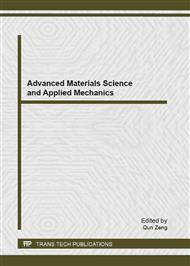p.79
p.88
p.94
p.100
p.105
p.111
p.115
p.119
p.123
Effects of Metal Loading and Milling Time on Hydrogen Storage on Modified Graphite
Abstract:
This paper examines the effect of metal loading (Zr-, V-, Ti-, and K-compounds) on the hydrogen storage property of mechanically milled graphite. The hydrogen adsorption took place at room temperature and 11 MPa measured by thermal volumetric analysis. The results showed that the graphite loaded with ZrCl4 provided a maximum hydrogen storage capacity of 0.6 wt%. Moreover, a milling time of 2 h seems to be the best, offering the highest hydrogen adsorption capacity due to the high specific surface area and the appropriate pore diameter created after the milling. In addition, it was found that the transition metals (ZrCl4 and VCl3) could stabilize the graphite structure and enlarge the gap between the grapheme layers to be suitable trapping sites for hydrogen adsorption. On the other hand, the K2CO3 and TiO2 loaded graphite did not show any improvement for hydrogen adsorption.
Info:
Periodical:
Pages:
105-110
Citation:
Online since:
May 2013
Keywords:
Price:
Сopyright:
© 2013 Trans Tech Publications Ltd. All Rights Reserved
Share:
Citation:


